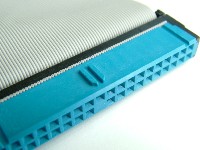The end of the road for Parallel ATA


Optical drive manufacturers will have to start getting more SATA CD and DVD drives out of the doorFor me, the end of the road for PATA can't come quick enough. Many high-performance boards now only have one PATA interface connector on the board which supports two devices (more often than not optical drives are fitted to these) but with Broadwater Intel will totally eliminate them. This will mean one thing - optical drive manufacturers will have to start getting more SATA CD and DVD drives out of the door.
I'm only aware of a few manufacturers that currently support Serial ATA optical drives, but I expect that this will make change the landscape pretty quickly, and by the end of the year all of the major players will have SATA optical drives of all types. At present you can expect to pay a premium for a SATA optical drive (or, more accurately, there are no bargain SATA optical drives on the market), while at the same time you can expect there to be no performance gains whatsoever. The advantages are that setup will be a little easier and the cabling will be a lot more straight-forward. While round PATA IDE cables don't obstruct airflow like the old-style ribbons did, I still find them far from ideal. While SATA cabling is far from ideal, it will no doubt improve things. It might also mean that those who might have been put off upgrading systems because of having to set jumpers on drives might be more likely to upgrade their systems with additional hard drives as they run out of disk space (it might also mean that I stop seeing pins that have been mangled by people hammering the connector in place).
That said, the word from manufacturers seems to be that some might continue to support the legacy interface and add third-party support PATA, so we might see still see PATA support on some motherboards for some years to come. On top of that, anyone wanting to move legacy gear onto a new PC that doesn't have PATA support can always add support by fitting an expansion card.